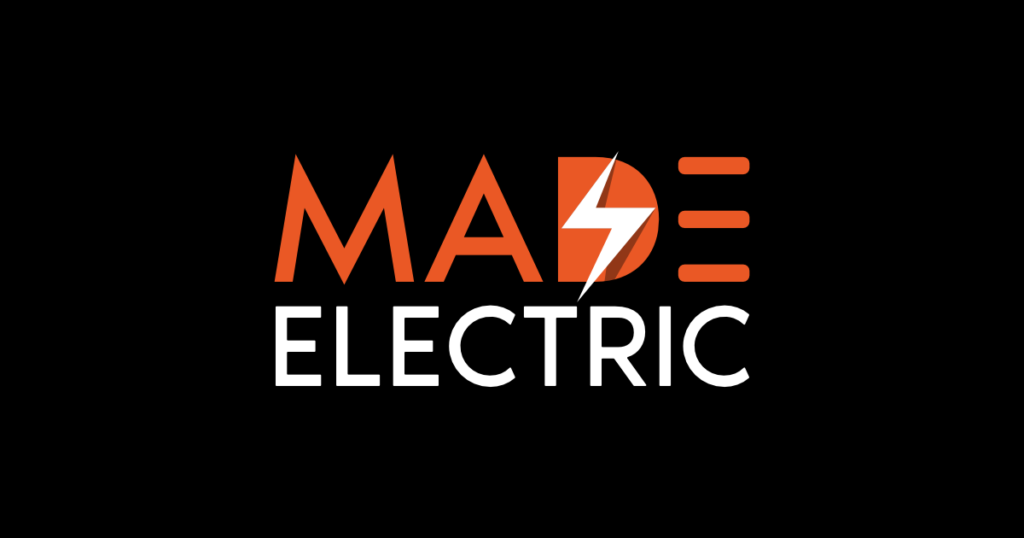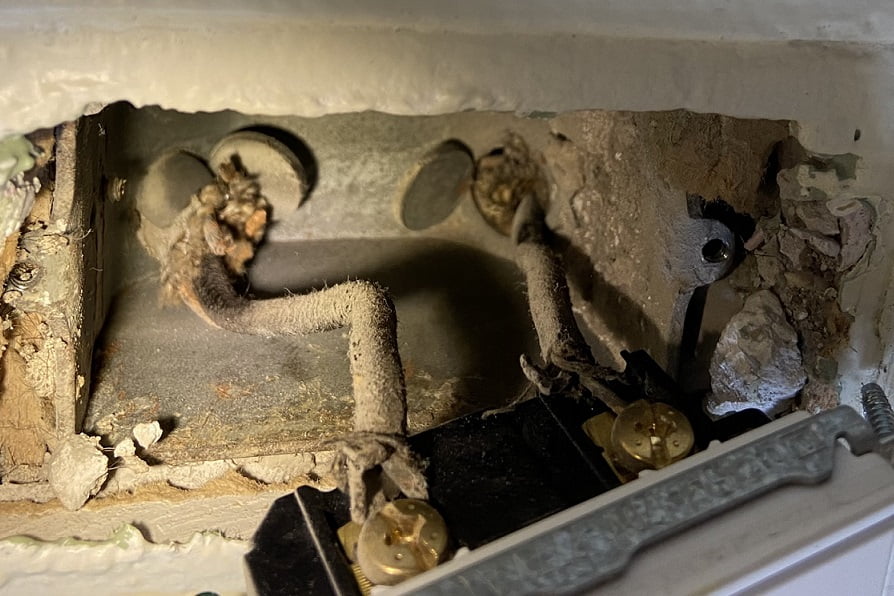Does your home have knob and tube wiring? What are the risks and what can you do?
What is knob and tube wiring?
Not all wiring is made the same. Houses can contain different wiring systems, some of which include copper, aluminum, or knob and tube (K&T) wiring. Knob and tube wiring is an open-wire system that was first added to homes between the early 1900s and the 1940s, though some regions of North America would allow this kind of wiring up until as late as the 1970s. Knob and tube wiring is still present in many older home, mainly those that were built before the 1950s.
Identifying whether a home uses knob and tube wiring and (in the case that it is does) whether the house has ever been rewired is important, as its use can pose safety risks and be hazardous to both the property and the homeowner.
The wiring can be found in the home’s basement or attic, with wires suspended in the air that run through cylindrical white knobs and tubes made of ceramic. The ‘knobs’ support the wiring and keep them secure, while the ‘tubes’ protect the wires and are inserted into holes along wooden ceiling/floor joists. These wires are usually insulated with a rubberized cloth fabric. Knob and tube wiring today is required to be enclosed in an electrical junction box, but outdated systems like these will be suspended in the air.
Even if a homeowner cannot immediately spot the knob and tube wiring, however, there is a chance that the wiring is hidden behind the walls. Instances of previous homeowners intentionally hiding these wiring systems is not uncommon, and in these cases, the knob and tube wiring system can be identified by having a licensed electrician inspect the area.
Why is knob and tube wiring an issue?
Knob and tube wiring is not necessarily illegal, but it is an outdated wiring method that can pose very serious safety hazards if not identified and maintained. There are also financial downsides to having this kind of wiring.
Here are a few of the several issues that come along with knob and tube wiring:
1. K&T wiring cannot handle today’s heavy electrical load
Knob and tube wiring was originally installed when there were much fewer electrical appliances in the average home. This kind of wiring was optimized for the 20th century home, which contrasts starkly with today’s home that is heavily reliant on technology. In our constant use of electrical kitchen appliances, heating, air conditioning, computers, and more, the electrical load ends up being much too heavy and creates strain on the wiring system. K&T wiring was not designed to handle such a high electrical demand, and since it is an insufficient system, there an inherent risk of fires.
2. K&T wiring may not have electrical grounding
The lack of a ground wire in older systems can be incredibly dangerous, as it creates the risk of shocks and fires. Ground conductors between 1950-1960 became standard, but outdated systems are likely to be missing any electrical grounding since the wires were made to be suspended in the air. The main two wires in a K&T system are the hot and neutral wire. The lack of a crucial ground wire creates a safety hazard that should be looked at immediately by a licensed professional.
3. Aging K&T wiring can be dangerous
Knob and tube wires are wrapped in rubberized cloth fabric (in contrast to modern wiring, which is insulated with plastic). As time passes, this outer layer of rubberized cloth becomes brittle and flaky, cracking and falling off. This leaves wires exposed, creating a shock and fire hazard. Other factors that speed up the ageing process, causing the physical integrity of the wiring to degrade over time, are water pipe leaks and pets creating damage.
4. Renovations or building changes can affect its safety
Knob and tube wiring is easily accessible to the homeowner, but DIY jobs or having unlicensed professionals tinker with wires is very dangerous. Wires may be altered in ways that end up compromising safety. There may, for example, be improper connections or splices done (such as with soldering or tape) without the use of junction boxes that leave wiring exposed.
Even if it may seem all covered, adding additional outlets for distribution or extension without knowing whether the system can handle it (using, for example, a higher amp fuse than allowable) can cause the wires to overheat. Modifications may also not adhere to building and electrical codes, so it is best to have a licensed electrician do the work to ensure that it’s being done safely and legally.
The biggest risk to safety is added insulation to the wall cavities of basements and attics. This will very likely lead to overheating, since K&T systems are designed to remain suspended in open air. Knob and tube wiring should never be covered up with insulation or run through it since the open air is required to keep it cool. Added insulation creates a major fire hazard.
5. K&T wiring is likely to cause insurance issues
It is very likely that the homeowner will encounter difficulties in obtaining a mortgage for houses that still have knob and tube wiring. Most insurance companies see it as high risk or unsafe, and are therefore unlikely to insure these kinds of houses until there have been electrical upgrades. It can end up being a major financial setback.
What can I do if I have knob and tube wiring?
With all of this in mind, you may be wondering what you can do if you have knob and tube wiring in your home, if you’re unsure whether you have it in the first place, or even just in case you ever encounter it in the future.
Here are the first few steps to take:
1. Get a professional inspection
A licensed electrician can not only verify what kind of wiring your home has, but in the case that it does use knob and tube wiring, they can check what condition it is in. From there, they can provide you with several possible choices to make to improve the safety of your home.
2. Weigh your options
This can include having the knob and tube wiring removed by an electrician so it can be replaced with modern wiring. Although most insurance companies would prefer not to insure a home with knob and tube wiring, there is also the option of making it safer if a homeowner would prefer to keep it. For any electrical system to be considered safe, it must be properly installed or altered by a licensed electrician. This is because it must adhere to a building code, which is regularly updated as new materials become known.
3. If you want to keep the K&T wiring, have a licensed electrician alter it accordingly
Electricians should replace any bad circuits. These are circuits that have been covered with insulation, incorrectly modified, or damaged in any way. The wiring circuit should be grounded according to modern electrical safety requirements.
Electricians can also add protection to reduce the risk of shock and fires. This includes Ground Fault Protection (GFCI), which senses excess electrical flow and prevents electric shock by cutting power to the outlet, or Arc Fault Protection (AFCI), a circuit breaker that prevents house fires.
Looking for an electrician to inspect your home and perform upgrades?

Contact MADE ELECTRIC today! We are a trusted electrical contractor that operates in Toronto and the GTA, with a professional and fully licensed team. We can provide you with peace of mind as our trained and certified electricians can determine whether your home’s electrical wiring is safe, working hard to fix anything that may put you or your family at risk.
Do upgrades and home renovations safely and contact us today! We are also happy to receive your calls at +1 (833) 623-3247, or e-mails at info@madeelectric.ca.

